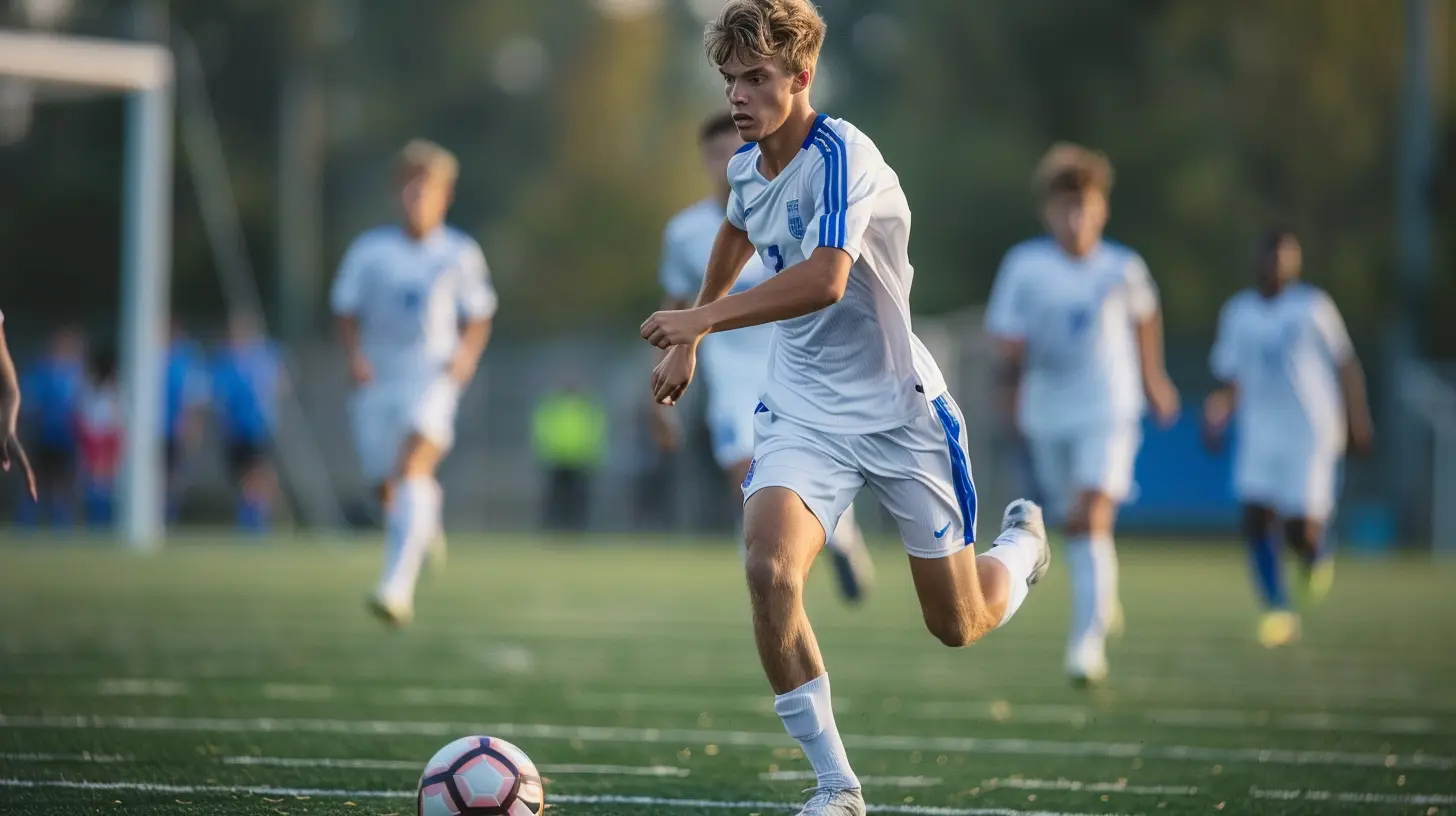How Youth Academies Influence the Future of Soccer Leagues
6 August 2025
Ever wonder where the magic begins for the stars we cheer for in packed stadiums and rowdy pubs? The truth is, those jaw-dropping dribbles, inch-perfect passes, and last-minute goals you see in top soccer leagues often have their roots planted years earlier—in youth academies. These institutions are like the secret labs where future soccer legends are shaped. But how exactly do they influence the future of soccer leagues?
Let’s unravel that, piece by piece.
What Are Youth Academies, Really?
Let’s start with the basics.Youth academies are training programs or institutions run by professional soccer clubs, federations, or private entities. Their primary goal? To nurture raw talent from a young age—sometimes as young as 6 or 7—and mold them into world-class players.
It’s more than just coaching, though. These academies provide a structured environment that combines formal education, tactical and technical drills, psychological support, and even nutrition plans. Think of them as a mix of a sports boot camp and a school, but with cleats and cones.
Famous academies like FC Barcelona’s La Masia or Ajax’s famed youth system are great examples. They've produced legends. Messi, Xavi, Iniesta? All La Masia products. Coincidence? Not at all.
The Pipeline: From Academy to Professional Fields
So how do these academies influence the big leagues?It's all about the pipeline. Clubs aren’t just waiting around to sign expensive stars anymore. Instead, they’re spending millions on their youth systems to develop homegrown talent. It’s like growing your own vegetables instead of buying them from the store—cheaper in the long run and tailored to your taste.
1. Player Development on a Micro Level
When you start training a child from a young age, you get to shape every aspect of their game. From their first touch to their football IQ to how they operate under pressure—youth academies act like a sculptor chipping away at a block of marble.And the precision matters. A player raised in a club’s system understands their playing philosophy to the core. Whether it's Barcelona’s tiki-taka or Ajax’s Total Football, academy products often fit into the first team like puzzle pieces.
2. A Financial Game-Changer
Here's the business side of things: Developing your talent is far more financially sustainable than constantly splashing cash in the transfer market. For example, Manchester United’s Class of '92 brought in multiple legends from their youth ranks—David Beckham, Ryan Giggs, Paul Scholes—saving millions and driving success for years.Even small clubs benefit. Selling a promising youth player to a bigger club can bring in massive transfer fees. Clubs like Southampton or Borussia Dortmund thrive on this model. It’s like investing a small amount in a startup and cashing out when it hits the stock market big time.
How Youth Academies Affect League Competitiveness
Now here’s the juicy part.Youth academies don’t just shape individual players; they shape entire leagues.
1. Leveling the Playing Field
In leagues where financial disparity is massive (think Premier League or La Liga), youth academies act as equalizers. Smaller teams that can’t compete for pricey superstar signings rely heavily on developing their own talent.Clubs like Atalanta in Italy or RB Salzburg in Austria consistently punch above their weight thanks to robust youth systems. Even if they lose their best players, they often have someone ready in the wings—or the academy.
That keeps the league interesting. Who doesn’t love an underdog story?
2. Identity and Style of Play
Ever notice how some leagues develop a certain "flavor"? Spain is all about technique and flair. Germany? High intensity and pace. That’s not by accident.Youth academies across a country follow national football philosophies encouraged by federations. When that happens on a large scale, it shapes how entire leagues look. Germany’s investment in youth infrastructure post-2000 World Cup disappointment is a classic case. The Bundesliga began to churn out technically sound, tactically aware players, and the league became more exciting and competitive as a result.
The Globalization of Youth Academies
Thanks to globalization, even academies have gone worldwide. European clubs now scout and develop players from Africa, Asia, and South America at a very young age. It’s like soccer diplomacy.For instance, PSG has satellites in Africa. Manchester City runs academies in the U.S and Australia. This has two big effects:
- It globalizes the talent pool.
- It raises the level of competition across leagues.
Now, a kid from Senegal or India has a path to reach the Premier League if spotted early. That wasn’t really the case 20 years ago.
And let’s not forget how this improves the global brand of clubs. When a club has an academy product from Tokyo lighting up the pitch, they also attract fans from Tokyo. Smart, right?
Technology and Science Join the Party
Here’s something that doesn’t get talked about enough—science and data have become key players in youth academies.Today’s youth coaches use GPS trackers, performance analytics, biomechanics, and psychology more than ever. It’s not just "go out and play". Every sprint, pass, and decision is tracked and improved like a video game stat. The result? More polished players entering professional leagues, ready to hit the ground running.
It's like raising a Formula 1 car from scratch rather than buying it off the lot.
Mental Toughness: The X-Factor
This one’s crucial.Youth academies aren’t just breeding athletes; they’re nurturing minds too. Mental strength is a game-changer in professional sports. The ability to handle pressure, bounce back from failure, and perform under lights—gets built over years.
Imagine a young boy leaving home at 10 to live in an academy dorm, training every day, and competing for a slot with hundreds of others. That forges resilience. By the time they reach the league, they’re mentally bulletproof.
And honestly, that’s often what separates a good player from a great one.
Not All Sunshine: The Flip Side of Youth Academies
Okay, it’s not all roses and trophies.Only a tiny percentage of kids in these academies actually make it to the top. For every Messi, there are hundreds who fade away. That raises some serious questions about mental health, education, and life after soccer.
Some academies are now addressing this by offering better education, career counseling, and alternative pathways. But we’ve still got a long way to go.
Also, there’ve been ethical concerns, especially with young players being uprooted from their countries or being promised the moon only to be abandoned.
Balancing ambition with responsibility is the next big challenge for academies.
So, What’s Next?
Youth academies are only going to get bigger and more advanced. As technology, sports science, and scouting improve, the talent funnel will get wider—and sharper.We’re also seeing a broader focus on inclusivity. Girls’ academies are growing rapidly, promising a bright future for women’s soccer leagues globally.
And who knows? With the right mix of passion, training, and opportunity, the next GOAT might already be out there chasing a ball in some dusty field—one academy scout away from greatness.
Final Thoughts
Youth academies are the heartbeats of modern soccer leagues. They fuel the future, revive league competitiveness, reflect national identities, and adapt with science and globalization. Whether you're a die-hard fan or just someone who enjoys the odd game, one thing's clear: without youth academies, soccer wouldn’t be half as magical or dynamic as it is today.So, next time you watch a match and see a 19-year-old bossing the midfield or nutmegging a veteran defender, just remember—he probably started this journey when you were still figuring out how to cook pasta.
all images in this post were generated using AI tools
Category:
Sports LeaguesAuthor:

Preston Wilkins
Discussion
rate this article
1 comments
Daria Oliver
What a fascinating topic! Youth academies play such a crucial role in shaping soccer's future. I'm curious about how different countries approach player development and the impact it has on their national teams. Could innovative training methods in these academies lead to a new era in the sport?
August 24, 2025 at 11:37 AM

Preston Wilkins
Absolutely! Different countries have unique approaches to player development, and innovative training methods can significantly impact national teams. As youth academies evolve, they hold the potential to revolutionize the sport's future.


